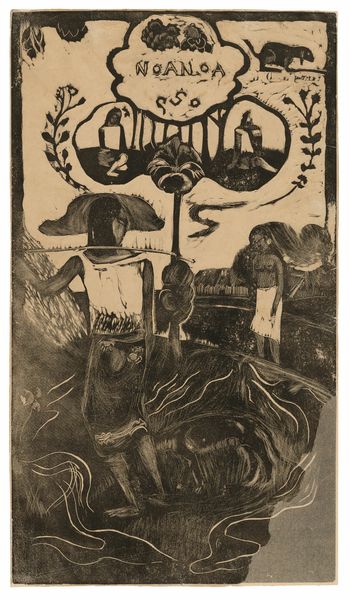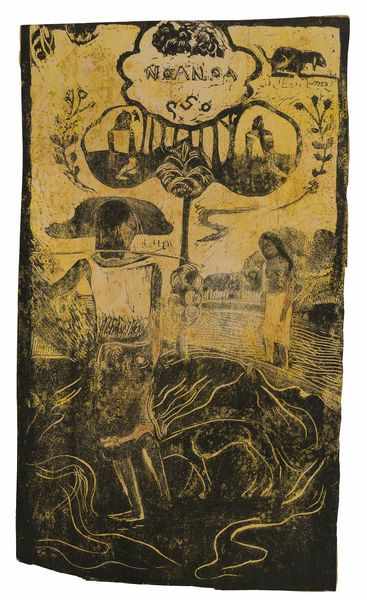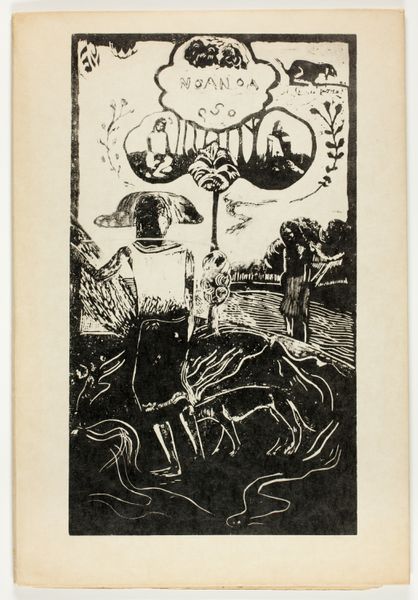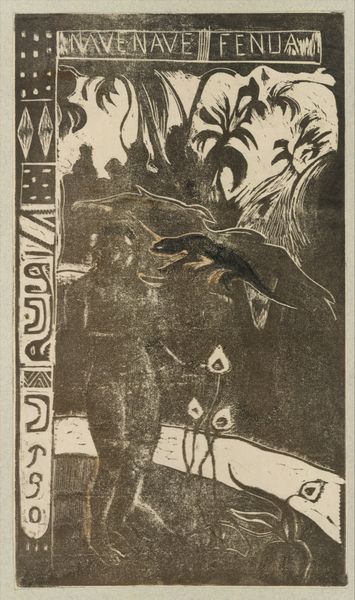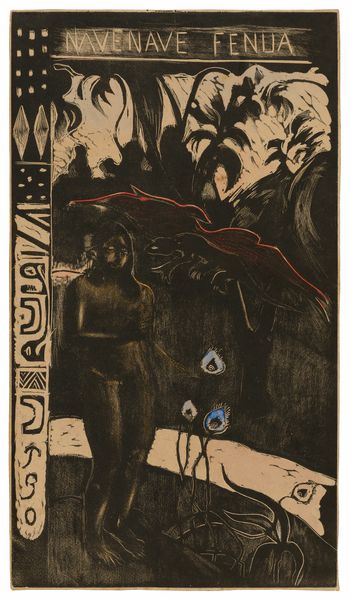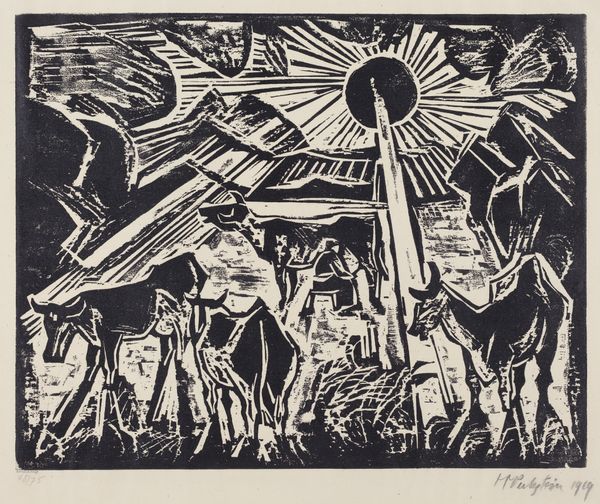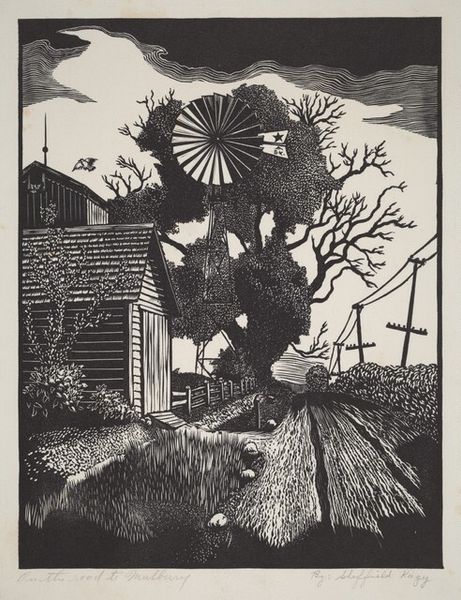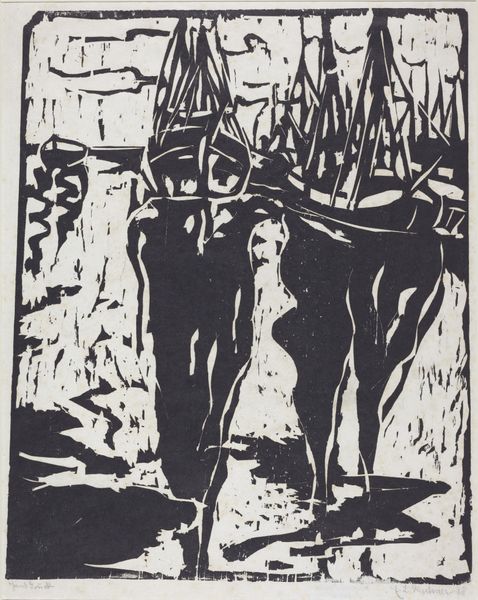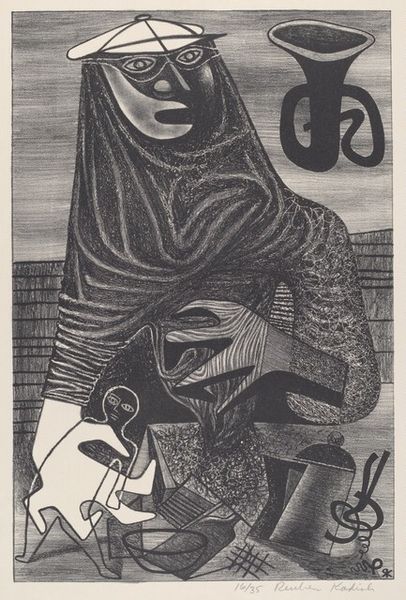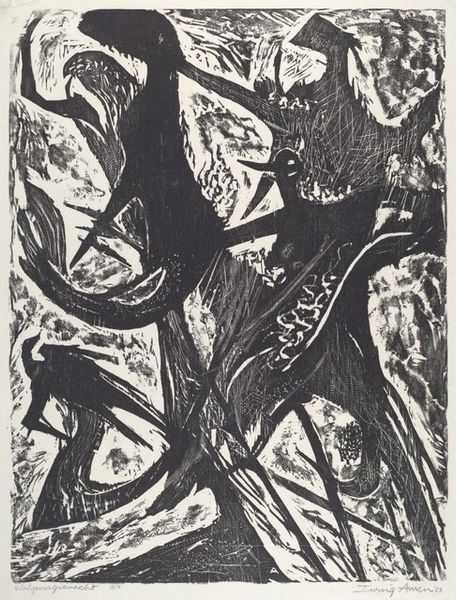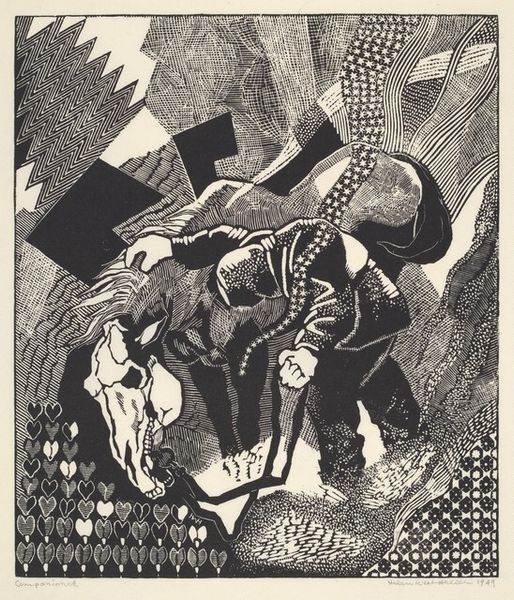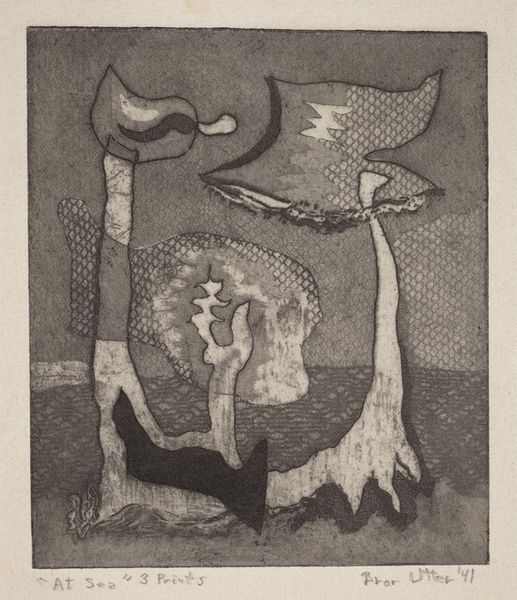
drawing, print, woodcut
#
african-art
#
drawing
#
narrative-art
#
pen drawing
#
animal
# print
#
human-figures
#
old engraving style
#
landscape
#
figuration
#
woodcut
#
orientalism
#
symbolism
#
post-impressionism
#
monochrome
Dimensions: 14 x 8 1/16 in. (35.6 x 20.5 cm): block 16 7/8 x 10 1/4 in. (42.9 x 26 cm): paper
Copyright: Public Domain
Curator: This is Paul Gauguin’s "Noa Noa," created between 1893 and 1894, currently residing at the Metropolitan Museum of Art. The medium here is a woodcut, giving it that striking, graphic quality. Editor: The first thing that jumps out is how dense and layered it is. There’s a real tension between the flatness of the print and the illusion of depth. It feels both immediate and deeply symbolic. Curator: Precisely. Gauguin was fascinated by Tahitian culture, and this print serves as a narrative exploration of his experiences there. But the historical context is crucial—this representation isn’t simply a window into another world; it’s Gauguin’s constructed view, mediated by colonial perspectives and the art market of the time. Editor: It’s impossible to ignore the medium itself. The raw, almost crude, carving—was that a conscious choice, pushing against academic polish and celebrating indigenous crafts? The physical act of making this print is clearly integral to the message. Curator: Indeed. Gauguin consciously utilized woodcut, a less refined technique compared to etching, to suggest a primal, authentic connection to the subject. His engagement with primitivism was complex, shaped by existing artistic and ethnographic representations of non-European cultures. Editor: It does raise questions about the idealization versus the reality. You mentioned the construction of narrative, and I wonder about the labor. How were these prints made, distributed, and received back in Europe? Were they objects of genuine cultural exchange, or trophies of artistic exploration? Curator: That's the critical question. These prints played a key role in shaping the public perception of Tahiti and Gauguin himself. His strategic deployment of "exotic" imagery allowed him to cultivate a distinct artistic persona, fueling his marketability within the Parisian art scene. He understood the power of shaping the narrative. Editor: So it's this interplay of intent, reception, and material process that makes “Noa Noa” so compelling, even now. We're looking at more than just an image of Tahiti. We are faced with questions about artistic authenticity and the artist’s role within the social currents of his time. Curator: Absolutely. Gauguin offers a very rich conversation for current dialogue and study through a post-colonial lens. Editor: A complex legacy rendered in stark black and white, sparking ongoing debates about cultural appropriation and artistic interpretation.
Comments
No comments
Be the first to comment and join the conversation on the ultimate creative platform.
